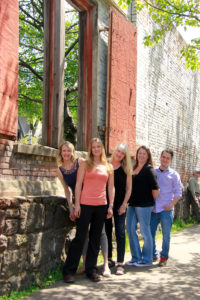Nestled in Oregon’s wine country is the antique town of Lafayette. Lafayette Oregon is located in beautiful Yamhill County, the heart of the Willamette Valley and wine country of Oregon.
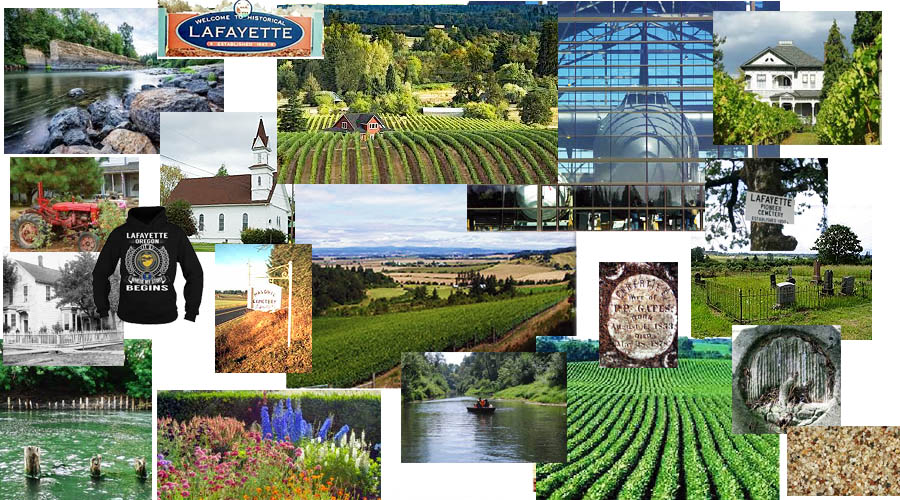
Lafayette Oregon is right on the Yamhill River, that meanders and twists through the hills and countryside, and it has several creeks running through it, Henry Creek, and Hawn Creek, plus lots of tributaries that feed them. They all dump into the Yamhill River, from the hills all around. There are two reservoirs along these creeks, and several ponds that show up on the map. The Yamhill is one of the prettiest rivers I have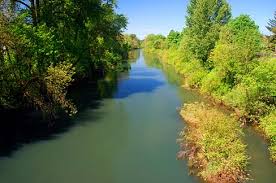 seen, it looks so wide and deep and peaceful. Just 35 miles southwest of Portland and 25 miles north of Salem, Lafayette is surrounded by beautiful rolling hills and agriculture land. It is still pretty quiet, and hasn’t become as touristy as the other nearby towns, like Dundee and Carlton. It is one of
seen, it looks so wide and deep and peaceful. Just 35 miles southwest of Portland and 25 miles north of Salem, Lafayette is surrounded by beautiful rolling hills and agriculture land. It is still pretty quiet, and hasn’t become as touristy as the other nearby towns, like Dundee and Carlton. It is one of 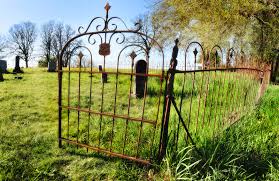 the oldest towns in the Willamette Valley, and has a Pioneer Cemetary with graves that go back as far as 1873, neglected and forgotten. It also had historic locks on the Yamhill River to facilitate travel down the Yamhill River to McMinnville.
the oldest towns in the Willamette Valley, and has a Pioneer Cemetary with graves that go back as far as 1873, neglected and forgotten. It also had historic locks on the Yamhill River to facilitate travel down the Yamhill River to McMinnville.
The little town is pretty small, Pacific Highway runs through the southern end, on it’s way from Portland to the beach. McMinnville is just a few miles away, which is why back in the 1898, the Yamhill locks were built so that the water level would be raised and people could navigate the river better. They opened in 1900, and consisted of concrete construction with a hand controlled butterfly valve that would open them up.They were used until 1954.
The City of Lafayette Oregon was founded in 1847 by Joel Perkins, an early pioneer to the Oregon Territory. The city is very rich in history and is the third oldest city in Oregon, the oldest city in Yamhill County. Lafayette was founded on the main Indian trail that traversed the Willamette Valley at a point on the Yamhill River known for years as Yamhill Falls. The town grew slowly at first, but grew by leaps and bounds after gold was discovered in California. In the early 1850’s, Lafayette was one of the most important and prosperous cities in Oregon. In 1995, because of the beautiful farm country around the city, the development of the Oregon wine industry and tourism in Yamhill County, and its proximity to the Portland metro area, Lafayette began to grow very rapidly. By 1996, it was the fastest growing city in the state. Today, it continues to expand. The city can take pride in its rich history, but must work very hard to maintain its small town feel and charm in the midst of this rapid growth. It is a town with a bright past and a very bright future. They are proud of their past, and there is a Lafayette Museum made of logs in downtown Lafayette Oregon.
Lafayette began to grow very rapidly. By 1996, it was the fastest growing city in the state. Today, it continues to expand. The city can take pride in its rich history, but must work very hard to maintain its small town feel and charm in the midst of this rapid growth. It is a town with a bright past and a very bright future. They are proud of their past, and there is a Lafayette Museum made of logs in downtown Lafayette Oregon.
It was incorporated in 1878. The population was 2,586 at the 2000 census. It was the county seat of Yamhill County from its founding in 1843 until 1886, when county residents voted to move it to McMinnville. The native plants in this area, along the Yamhill River, are Douglas-fir, Grand fir, big leaf maple, Oregon ash, Vine maple, Willow, Elderberry, Snowberry, Sword fern, Lady fern and Trillium
History of Lafayette Oregon
I love history, and have always wanted to come to Oregon to the Willamette Valley that I fell in love with when I was in school in Illinois and we did an in depth study of the Oregon Trail and Willamette Valley. Each town has it’s own fascinating story, and as I write about each little area around Portland and the Willamette Valley, I wish I could just step back in time for a short while and see what it was like. I guess this is why I spend so much time on the history of the different towns. Lafayette, being one of the very first towns settled, inspires me the most!
During the 1840s and 1850s, pioneers flooded into the 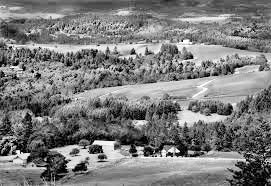 Willamette Valley from the Oregon Trail, and were receiving 160 acres each from the Land Donation Act of 1850. As far back as 1846, Lafayette was incorporated as a city, and actually was the county seat, and law enforcement was set up. Lafayette actually
Willamette Valley from the Oregon Trail, and were receiving 160 acres each from the Land Donation Act of 1850. As far back as 1846, Lafayette was incorporated as a city, and actually was the county seat, and law enforcement was set up. Lafayette actually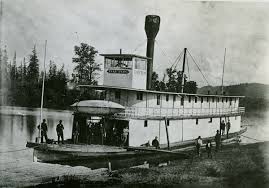 had the first Circuit Court in Oregon. It started under a huge oak tree that was called Council Oak. The first actual courthouse was built in 1850! And the first Sheriff was appointed in 1845.
had the first Circuit Court in Oregon. It started under a huge oak tree that was called Council Oak. The first actual courthouse was built in 1850! And the first Sheriff was appointed in 1845.
The lumber industry was big in the area, and many farmers grew wheat, both of which had to be exported. Roads were often impassible because of the rains, and there was no train yet…just the river! Captain James Miller began transporting things on the Yamhill River all the way back in 1850, and he had the goal of putting in a dam and 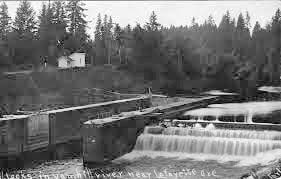 locks so that the river would be deeper. It took half a century but in 1900 the Lafayette Locks opened up and ran for over 50 years. The locks were 275 feet in length and raised the water up by 16 feet. This allowed transportation to McMinnville year round. You can learn more about it on the Yamhill County site
locks so that the river would be deeper. It took half a century but in 1900 the Lafayette Locks opened up and ran for over 50 years. The locks were 275 feet in length and raised the water up by 16 feet. This allowed transportation to McMinnville year round. You can learn more about it on the Yamhill County site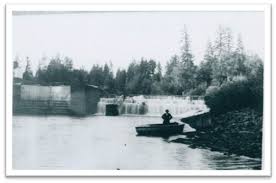
There are still quite a few historic buildings and homes in Lafayette Oregon, giving it charm and depth. The wine industry has taken over. There are some historic areas that have been 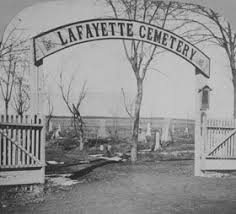 somewhat preserved too. The Joel Perkins Park was created way back in 1846, when Perkins named the town, making Lafayette the third oldest settlement in all of Oregon! He came to Lafayette in 1844 from Indiana, and was the one who platted out the town. He had gotten his land claim when he was only 24 years old. In 1848 he went to California to the gold fields, not to find gold but to set up a trading post. All those Californians had to eat! He also helped set up Grants pass, as a way to make the trail to California gold fields.
somewhat preserved too. The Joel Perkins Park was created way back in 1846, when Perkins named the town, making Lafayette the third oldest settlement in all of Oregon! He came to Lafayette in 1844 from Indiana, and was the one who platted out the town. He had gotten his land claim when he was only 24 years old. In 1848 he went to California to the gold fields, not to find gold but to set up a trading post. All those Californians had to eat! He also helped set up Grants pass, as a way to make the trail to California gold fields.
They used to celebrate Lafayette Heritage Days in the park way back in the 1800s. People would come from all around, including the Indians from Grand Ronde, settlers from Tuality, all coming on horses or wagons pulled by horses. You can learn more about this on the site New Lafayette

